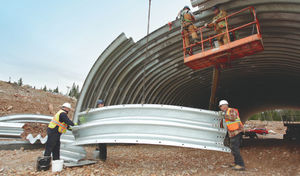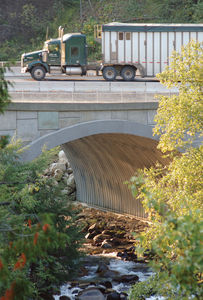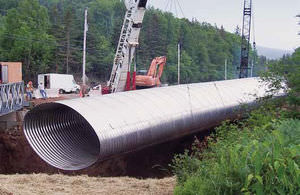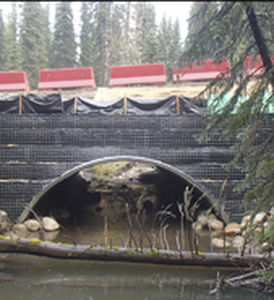
- Building & Construction
- Building material
- Corrugated sheet metal
- atlantic Industries Limited (AIL)
- Products
- Catalogs
- News & Trends
- Exhibitions
Corrugated sheet metal THE EDGE steelfor bridge construction






Add to favorites
Compare this product
Characteristics
- Type
- corrugated
- Material
- steel
- Applications
- for bridge construction
Description
Revolutionizing tunnel liner construction methods and application ranges.
THE EDGE Four-Flange Structural Liner is the latest innovation from AIL’s research and development teams.
Flanged seams instead of conventional plate overlaps
Simply put, THE EDGE is just the integration of bolting flanges to all four sides of our Super•Cor plate sections. However, it has been revolutionizing traditional liner plate construction methods and application ranges for the civil and mining sectors.
Ten times stiffer, 5 times stronger than traditional steel liner plate
The flanges add significant strength to the plates and structures, often reducing the need for reinforcement ribs on applications like large tunnels or support structures.
Build from one side — faster, safer and more accurately
THE EDGE Four-Flange Structural Liner allows for better fitting/assembly of plates and that means smaller crews and a lower installed cost. The flanges can be ordered on the outside or the inside of a structure, so assembly work can be carried out all from one side when access is restrictive. Underground tunnels, support structures and shaft liners can be completely built from the inside. Structures over functioning rail lines, conveyors or streams can be built from the outside.
Custom curved or leak-resistant structures
Optional custom flanged plates can be incorporated to facilitate curved structures and gaskets can be added to the flange seams to provide leak-resistance for a wide array of applications.
Catalogs
Other atlantic Industries Limited (AIL) products
Structural Plate Bridges & Tunnels
Related Searches
- Woven wire fabric
- Building woven wire fabric
- Metal sheet
- Steel metal sheet
- Elongated mesh woven wire fabric
- Aluminum metal sheet
- Galvanized steel metal mesh
- Retaining wall
- Concrete retaining wall
- Modular retaining wall
- Prefab retaining wall
- Steel bridge
- Corrugated metal sheet
- Guard rail
- Truss bridge
- Road bridge
- Road guard rail
- Pedestrian bridge
- Modular bridge
- Metal guard rail
*Prices are pre-tax. They exclude delivery charges and customs duties and do not include additional charges for installation or activation options. Prices are indicative only and may vary by country, with changes to the cost of raw materials and exchange rates.









